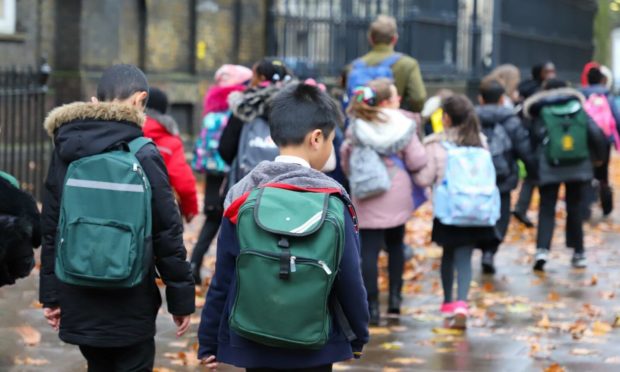As some normality returns after the lockdowns of 2020 and 2021, many children may be feeling excited about going back to school.
Yet for some, after 18 months of disruption and a long summer holiday, returning to school can also be an anxious time.
There are a number of reasons why young people may find it difficult to go back to school. They may feel worried about starting a new school, especially if they haven’t been able to explore their new surroundings beforehand as they would normally.
Children may also have worries and fears about bullying, keeping up with schoolwork or experiencing physical changes to their body over lockdown, making them concerned about their appearance.
Some children may have grown used to being at home a lot and now feel uncomfortable about being around so many people again. Others may be fearful about catching Covid and spreading it to their families.
Recent exam results could also heighten anxiety about returning to school. In more than 40% of the 1,812 counselling sessions that Childline held between April and June this year relating to exams, young people talked about an impact on their mental and emotional health.
No matter the reason why children are feeling apprehensive about the return to school, it is important that they can talk to someone about how they feel. As well as speaking to the trusted adults in their lives – such as teachers, parents and even friends’ parents – young people can talk to our Childline counsellors who are always there to listen about any worries they may have.
Children can also visit Childline’s Calm Zone, which offers a lot of practical tips and activities on how to destress, as well as the moderated message boards, where they can find peer support.
Home is not a safe place for every child
Home isn’t a safe place for all children and some may have had traumatic experiences, including being abused or neglected, during lockdown.
The NSPCC helpline, which any adult can call if they are worried about the wellbeing of a child, saw a rise in the number of referrals it made to police and local authorities in Scotland in the months following the start of the first lockdown last year.
Adverse experiences during childhood can have a damaging impact that lasts into adulthood. It’s so important that schools are provided with the resources needed to recognise and support children who have had such experiences, and that the young people have access to therapeutic services to help them recover.
Young people can get help from Childline at childline.org.uk or by calling 0800 1111 for free.
Any adults with concerns about a child, can contact the NSPCC helpline on 0808 800 5000 or help@NSPCC.org.uk
Carla Malseed is an NSPCC Scotland campaigns manager


